The Razer Blade 15 (2021) Review: Amped Up With Ampere
by Brett Howse on March 11, 2021 9:30 AM EST- Posted in
- Laptops
- Gaming
- Razer
- Razer Blade
- Ampere
System Performance
Although we saw the announcement of some 11th generation Intel Core “H-Series” processors at CES 2021 based on their newest Tiger Lake platform, Intel has yet to roll out those chips. So the Comet Lake platform remains Intel's leading platform for high-end laptops, which Razer is leveraging here in the Razer Blade 15.
On the CPU side, Razer offers only two options. The Base model, which we are reviewing today, features the Core i7-10750H processor, which is six cores, twelve threads, and a peak boost turbo of 5.0 GHz. The Advanced model steps up to the Core i7-10875H, which is eight cores, sixteen threads, and a slightly higher maximum boost of 5.1 GHz. Some will likely lament the lack of an AMD offering, but that would require a complete re-engineering of the product, which would be a significant undertaking, especially since the device leverages NVIDIA’s Optimus technology. Never say never of course.
Razer offers dual-channel memory with 16 GB and 32 GB options depending on if you go Basic or Advanced, and the system can support up to 64 GB of DDR4 if you want to add memory. Storage is all M.2 NVMe, with 512 GB or 1 TB options, and both the Basic and Advanced models have an open M.2 slot if you want to add more storage.
To see how the Razer Blade 15 performs, it was run through our laptop system test suite. For comparison systems, most of the other systems are dGPU based as well, with the exception of the MSI Prestige 14 Evo, which will showcase Tiger Lake vs Comet Lake.
PCMark 10
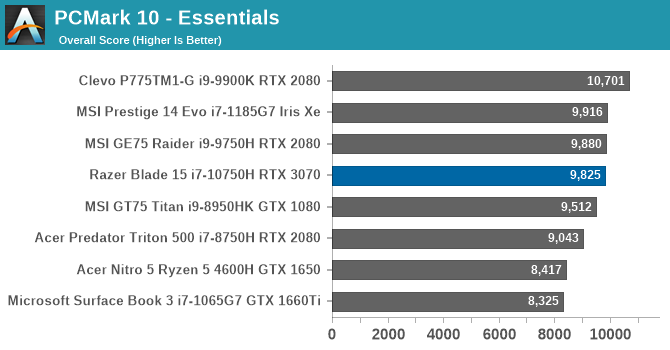
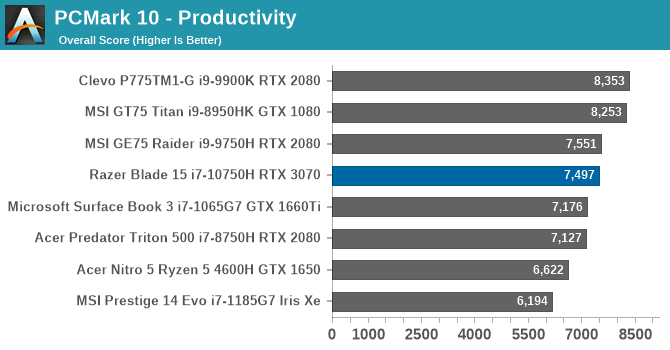
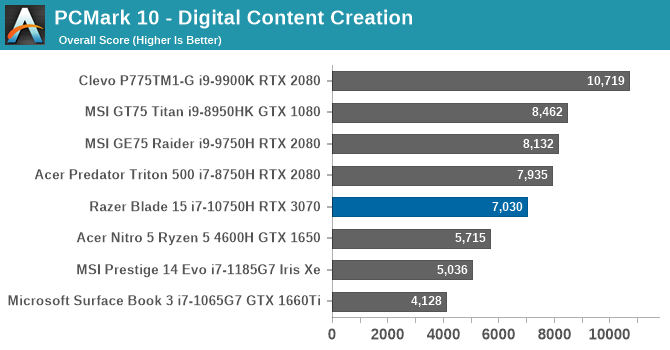

UL’s PCMark 10 is a full-system benchmarking suite, with different sub-test categories testing different aspects of the system. CPU, GPU, RAM, and storage all play a part in the overall score. The Razer Blade 15 nestles in about mid-pack in this configuration. The higher core counts of some of the other systems allow them to win the day.
Cinebench
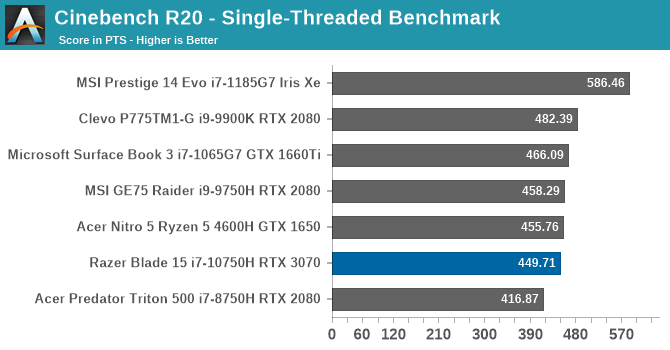
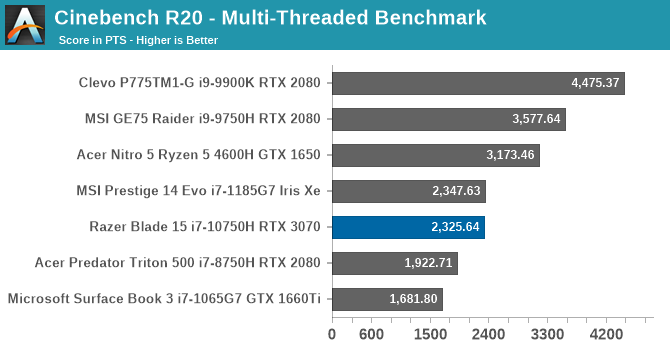
Cinebench, as a pure CPU test, really highlights how much the Skylake architecture at the heart of the Core i7-10750H is showing its age. In the single-core test, it slots in about where expected, but is demolished by the newer Willow Cove core found in the MSI Prestige, and even in multi-threaded, the Tiger Lake platform with just four cores can still slightly edge the hex-core i7 in the Razer Blade. Of course, the Advanced model of the Razer Blade 15 comes with an eight-core processor which would boost this result up a tier, but there is no denying that Comet Lake is not as competitive as it once was.
7-Zip
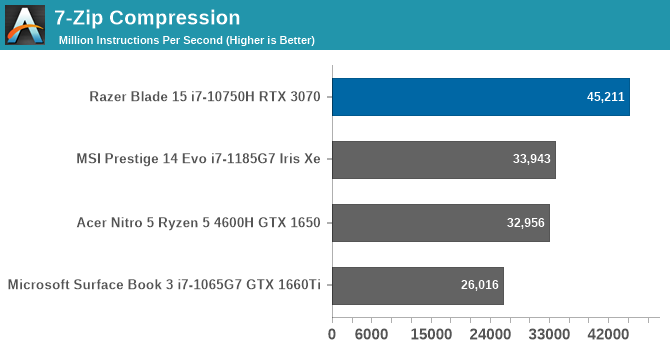

The open-source file compression and decompression tool 7-Zip includes a built-in benchmark to show how capable a system is doing a very basic, yet necessary, task. As a newer test in our suite, we don’t have quite the back-data of all of the systems, but unlike Cinebench, the extra cores do help propel the Razer Blade ahead of the Tiger Lake based MSI Prestige.
Handbrake
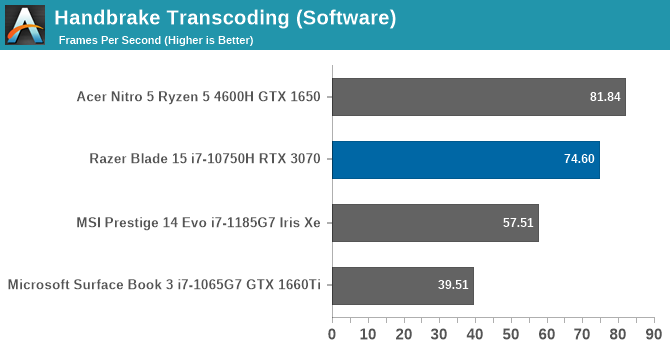
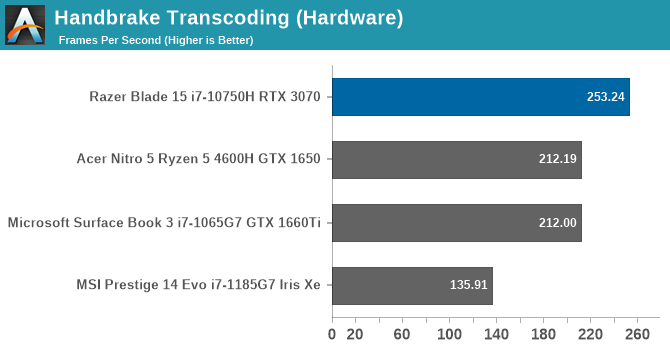
Transcoding video is a task that is very demanding, and although Intel, AMD, and NVIDIA all provide fixed-function hardware to accelerate this task, software encoding tends to provide the best results. The hex-core i7-10750H has a strong showing in software transcoding, almost matching the Renoir Ryzen 5, but not quite. On the hardware side, NVIDIA’s RTX 3070 provides plenty of grunt to push past the Pascal GPUs.
Web Performance
Although a critical feature of any system, web performance is arguably the least reliable to test, as the browser itself plays such a key in performance, and yet the browsers are constantly upgraded, with some upgrades bringing better performance, while others may improve reliability at the cost of performance. For our web tests, we are using the now-default Microsoft Edge based on Chromium. The systems which have results for Speedometer 2.0 were tested with the new Chromium Edge, while the others were tested on the EdgeHTML version, so the WebXPRT 3 scores somewhat showcase the performance discrepancy with different browser scripting engines.
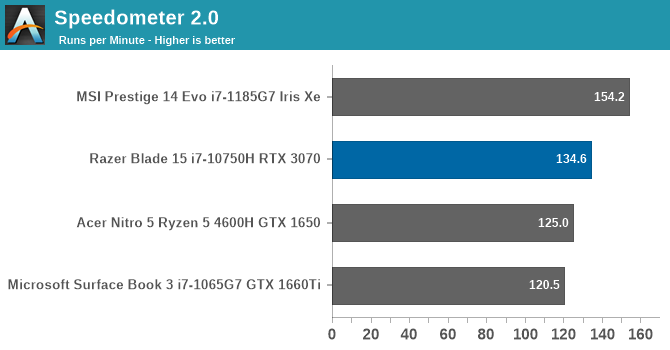
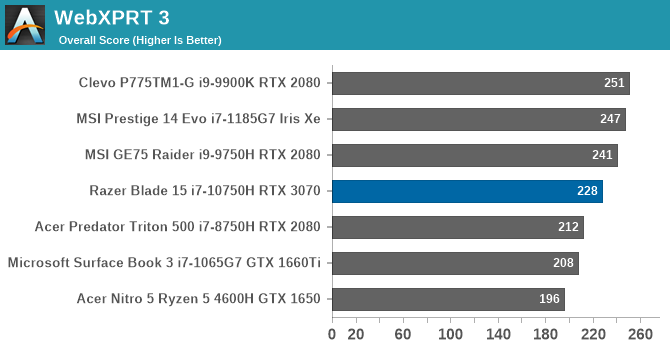
Unlike some of the more processor-intensive scores, the Intel Core i7-10750H, which can hit a maximum turbo of 5.0 GHz, is able to outclass the AMD Ryzen in the Acer Nitro 5, but Tiger Lake is well ahead here.
Storage Performance
In an effort to showcase more real-world storage results, we have moved to using UL’s PCMark 10 suite with its new storage tests, which use actual traces from common applications, booting, and more. On the storage side, Comet Lake does not support PCIe 4.0, unlike Intel’s latest Tiger Lake, but Razer has outfitted the Razer Blade we received with Samsung's PM981 drive.
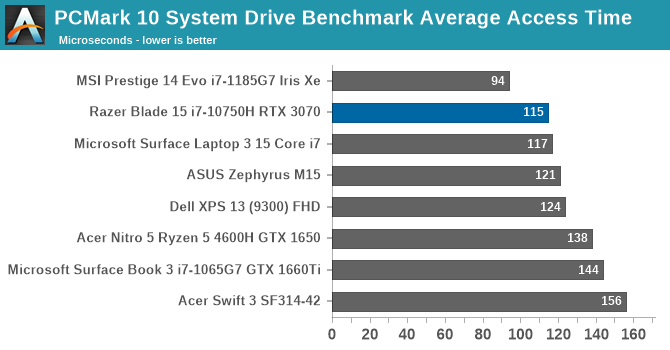

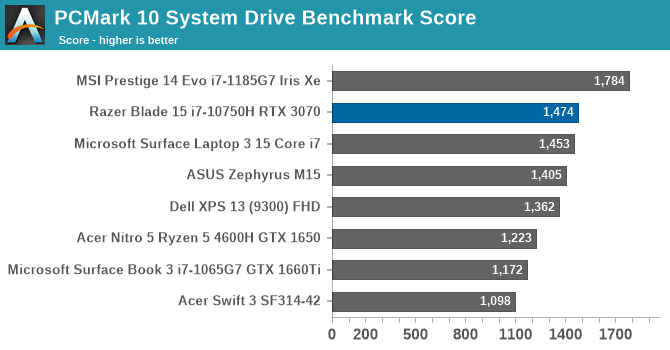
For a PCIe 3.0 setup, the PM981 performs very well in this 512 GB configuration. Other than the PCIe 4.0 drive, it is ahead in all aspects compared to any other laptop we’ve tested with this new suite.
As always, storage is somewhat of a commodity now, so there is no guarantee that any laptop will ship with the same storage, but the Razer laptops we have tested tend to come with Samsung drives, and the PM981 with its 3D TLC NAND is a strong performer.


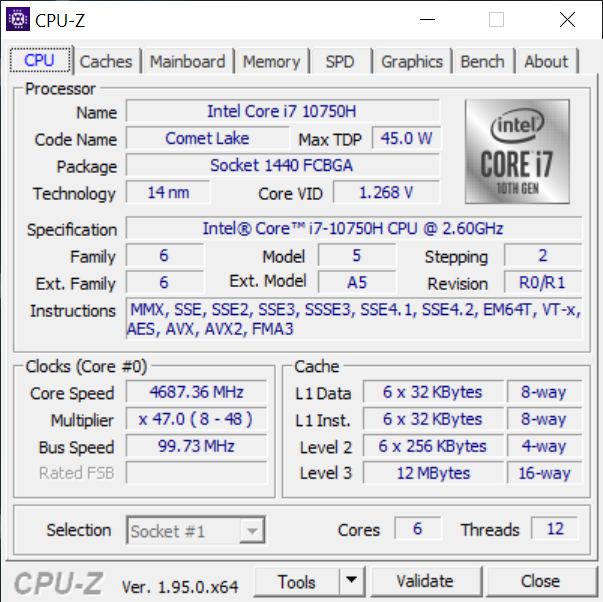








44 Comments
View All Comments
cknobman - Thursday, March 11, 2021 - link
As much as I love Razor I dont see much reason to buy one of these over a ROG Zephyrus G15 GA503.If Razor cannot start incorporating AMD processors they are going to continue to lose sales.
Alistair - Thursday, March 11, 2021 - link
yeah no Ryzen 5000 is a huge bummer for such a premium priced laptopNetmsm - Thursday, March 11, 2021 - link
totally agreequiksilvr - Friday, March 12, 2021 - link
Not only that this isn't even 11th gen Intel. These "10th gen" chips are still on the 14nm lithography and still on Thunderbolt 3 which is not as robust as Thunderbolt 4 for eGPUs since the controller is built into the CPU and you get a lot less less latency. And yes, it is a MASSIVE difference. https://youtu.be/42o5tPE1uFA?t=224Agent Smith - Thursday, March 11, 2021 - link
AgreeDolda2000 - Thursday, March 11, 2021 - link
I think it will be easier for these high-end brands to motivate AMD processors when AMD start adding built-in Thunderbolt support.Though I guess that being said, I'm not sure what their excuse would be for not just adding a Thunderbolt chipset for a laptop in this kind of price range.
bluefish111 - Wednesday, March 24, 2021 - link
I'm not sure if you guys are aware but during negotiations im sure intel pays razer or charges them less than market price so that they keep intel inside* i think there was an anti competitive case against intel who did the same with dell back in the day I'm sure they still practise the same thing but indirectlySpikke - Tuesday, April 20, 2021 - link
I recently purchased a Blade because you can get the 2020 models for good prices right now, but I really do agree with you regarding AMD. Definitely would have preferred to purchase it with a Ryzen CPU.RSAUser - Thursday, March 11, 2021 - link
Without a price and power draw, the GPU comparison in laptops is a bit meaningless.The power draw/performance isn't much different, and the price went up, this new generation doesn't look that great.
The more interesting stuff is the external enclosure support that some manufacturers did which if standardized can make a very compelling argument as can then allow for higher GPU power draw, swapping it when better ones come out, and maybe thinner/lighter laptops in that class.
Srikzquest - Thursday, March 11, 2021 - link
Unless you need a webcam, I don't see a reason to purchase any other laptop for gaming other than Asus Zephyrus. Unless there is some serious bribing involved or just may be AMD is not able to scale enough to meet the market demand, I don't know why these laptop brands are not supporting AMD processors. Its funny that even if someone supports them, they are not the latest generation ones or are gimped somewhere on the spec sheet and because of this, most consumers think AMD ones are not great or don't exist at all and they avoid them. I don't have anything against Intel but this is not how competition should work and consumers are not getting the best ones out there.